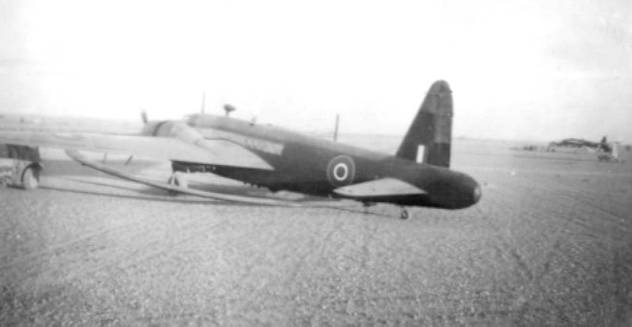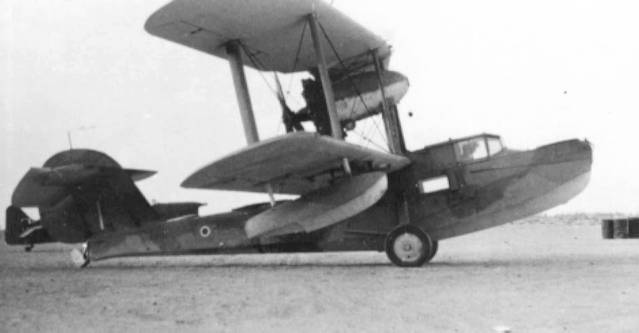 Lou Kemp |
Photos taken by Corporal Stuart "Stu" Morris who, with Lou, completed No.24 Nursing Orderly Course
 Lou Kemp |
Lou Kemp was born in Melbourne on 20 June 1915 to Albert and Annie Kemp. An ambulance and anti-gas attendant by profession, he enlisted in the RAAF on 27 August 1941 at the age of 26. Following completion of Basic Training, Lou was sent to No.24 Nursing Orderly Course, graduating as a Nursing Orderly on 13 December 1941.
He was assigned to No. 3 Squadron RAAF and dispatched to North Africa, arriving in Suez in May 1942.
Lou was promoted to Corporal on 1 December 1942, and No. 3 Squadron spent Christmas at a landing ground near the Marble Arch, which marked the border between Tunisia and Libya. It was around here that several Squadron personnel were killed by land-mines laid by the retreating Axis forces. As No. 239 Wing made ready to push into Tunisia, aircraft of its squadrons flew over Tripoli and the Gulf of Tunis, strafing supplies coming in from Sicily in small boats. On 1 January, five German Bf-109 fighters attacked twelve No. 3 Squadron Kittyhawks east of Tripoli, downing two of them.
Sicily fell to the Allies on 17 August, and 1 September 1943 Lou was promoted to Sergeant and was re-classified as a Medical Orderly. After the invasion of Italy on 3 September, No 239 Wing was based at Grottaglie in Southern Italy between the 17th and 19th to support the Allied attacks on Salerno. By October the Wing was established first at Reggio and then Foggia in southern Italy. From the two airstrips, the Wing answered a stream of calls from the Allied armies (US 5th and British 8th) for close air support missions, as well as bombing and strafing enemy supply lines.
For the next year No. 3 Squadron followed the Allies up the Italian 'boot', occupying a large number of airstrips as they went. On 13 January 1944, No.3 Squadron dropped its first 500lb bomb during an attack on a tank repair depot at Loreto, the aircraft having previously been armed with two 250lb bombs. Following the capture of Monte Cassino (which the RAAF squadrons bombed), No. 3 Squadron supported the Allies' fight to capture Rome, which was liberated on 4 June 1944.
The Wing advanced further up the coast to Iesi on 20 September 1944, and reached Fano on 20 November. It was here that No. 3 Squadron converted from Kittyhawks to P-51 Mustang III and IV models, and was then involved in attacking targets in Venice, Padua, and Verona. From Fano, No. 3 Squadron ranged over enemy territory, blowing up bridges and railway lines, hitting trains and disrupting the lines of communications; before attacking ferry terminals on the Po and Adige Rivers in an attempt to bring further disruption to the Axis retreat.
On 15 February 1945 the Squadron received a signal to move with the wing to Cervia, which was 40 miles further north from Fano. The move of personnel and equipment was completed by the 26th, and the men soon settled quite comfortably into the chalets, which surrounded the airfield. The steel-matting runway at Cervia was much better than the dirt strip at Fano, allowing operations in weather that would have otherwise grounded the Wing.
When the final phase of the war in Italy began March-April, Lou was assigned to No. 454 Squadron RAAF. Then based at a strip amongst the sand dunes of Cesenatico (five miles south of Cervia), 454 Squadron flew Baltimore bombers, and like the two RAAF fighter squadrons, it was heavily involved in the battle for the northern bank of the Senio River began on 9 April. While the Mustangs and Kittyhawks of Nos. 3 and 450 Squadrons flew strafing missions, the Baltimores dropped fragmentation and incendiary bombs on the Axis positions, later switching to armed-reconnaissance operations designed to keep the Germans awake and stressed.
No.3 Squadron's last operational flight took place on 5 May 1945, when a reconnaissance mission was flown over Trieste and Udine in Italy and Fiume in Yugoslavia. The Germans surrendered two days later. The unit moved to Lavariano near Udine during the second week of May, where the entire Desert Air Force took part in an aerial review on the 28th, Squadron Leader Murray Nash leading the Squadron over the dais.
After Lou was discharged from the RAAF on 14 February 1946, he received the Africa Star with 8th Army Rosette, Italy Star, 1939/45 Star, Defence Medal, Australia Service Medal 1939/45, and the Returned from Active Service Badge for his service.
Sergeant Louis Albert Kemp passed away on 10 June 1996, and his death notice in the Courier-Mail newspaper on 13 June 1996 stated, "He served his country with pride".
|
|
|
|
Amirya, Egypt - October 1942 |
1942 |
|
|
|
|
Stuart at SSQ 1942 |
Sidi Barrani |
|
|
|
|
A worn-out Beaufighter |
In standard "Desert Dress" |
|
|
|
|
Memories of back home |
Sgt Rex Palmer's grave - 21 Apr 43 |
 |
|
|
Lou at Nouzaa Gardens, Alexandria 42 |
Stuart and Lou |
|
|
 |
|
Home for the working class |
Lou's class |
|
|
|
|
The long long trail a-winding |
|
|
|
|
|
Contemplating the future |
1 bottle each (+1 for first-finished) |
|
|
|
|
Dusk |
Italian fields |
|
|
|
|
Friendly folks |
Desert Antelope for Dinner! |
|
|
|
|
Desert living |
All alone |
 |
 |
|
Captured Bf109 HK849 |
Sgt Bullwinkle's LG91 "take off" |
|
|
|
|
Who are we ?? The Victors! |
Castel Benito, Libya. Feb 1943 |
 |
 |
|
Vesuvius 1943 - Lava stream |
Landing in Italy |
|
|
|
|
Moving thru the snow |
Nissen hut Italy 1944 |
|
|
|
|
King Victor Emanuel's monument, Roma. |
Keeping warm - Cutella |
 |
 |
|
Feb 1944 snowstorm in Italy - Cutella |
HQ for us in snowy 44 |
 |
|
|
Italy - from the top |
Ken, Stu and Lou - Ken went to 458 |
|
|
 |
| Lou, Stu, FLLT Crick - SS Veersalla |
Noufilia |
|
|
|
| Amalfi, Italy 1943 - terraced groves |
Amalfi-Ravello, Bay of Naples 1943 |
|
|
|
|
Sorrento, Italy Nov 1943 |
Capri November 1943 |
|
|
 |
|
Italian scenic mountain train |
Sun bath - October 1943 |
|
|
 |
|
Still flying |
On the tarmac |
|
|
|
|
450 Squadron's work horse, a German Henschel Hs126 |
Kitty II FS490 with Squadron Leader Brian Eaton's emblem |
|
|
 |
|
A captured 109G ... The famous "Black 6" now displayed at IWM Duxford, UK. |
Another BF 109F-4/trop, transformed to our colours HK849 |
 |
|
|
Wellington with electromagnetic ring for sweeping mines |
....A collection of odd aircraft ... |
|
|
|
| .... | Auxiliary transport of the German unit "Wespen" (Wasps).... |
|
|
|
| Bf109 | CR.42 |
|
|
|
| Dornier 17Z | SM.79.... |
|
|
|
|
Wellington didn't make it |
V E Day (Lou is 4th from right) |
 |
 |
|
Yeh ... I know |
Grace and beauty ... Air-Sea Rescue Amphibian |
|
|
|
|
Victory fly past |
Perfect formation |